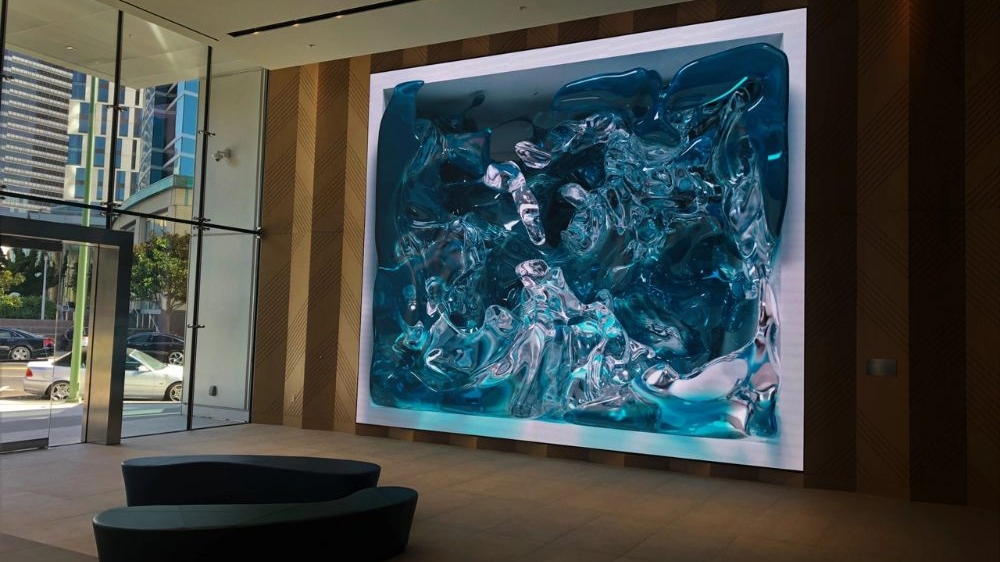Display technology never stands still. New environments, evolving expectations, and rising creative ambitions demand more from what sits between content and canvas. At the core of that evolution is Aurora, Nanolumens’ next-generation LED processing platform—an innovation built not just to support dvLED displays, but to elevate every pixel they produce.
Aurora doesn’t just refine the signal chain. It redefines it—serving as the intelligent middle layer that converts content from source to screen with unmatched precision. From true-to-source color to zero-calibration deployments, this is not your typical processor. It’s a platform engineered for creative mastery, operational simplicity, and performance without compromise.
True-to-Source Color: What You See Is What Was Intended
Aurora’s most visible advantage is exactly that; visible. Its 23-bit processing, paired with support for major color standards including DCI-P3, Rec. 709, and Rec. 2020, delivers cinema-grade fidelity across any Nanolumens display. HDR content, especially formats like HLG, renders with intelligent tone mapping, preserving shadow detail, skin tones, and fine gradients that legacy systems often wash out or distort.
This is more than high resolution; it’s high integrity. The result? Visuals that faithfully reflect the creator’s intent on any screen, at any resolution.
Pixel-Level Precision Without the Complexity
Aurora removes the most painful setup headaches integrators face. Gone are the calibration files, setup scripts, or tile-specific configuration quirks. Why? Because Aurora stores calibration data at the module level, allowing it to auto-detect and auto-calibrate replacement tiles in under a minute.
This means zero setup files, 50% less cabling, and dramatically faster installs. For teams working against deadlines or maintaining 24/7 environments, this can be the difference between hours of delay and instant deployment.
Purpose-Built for Nanolumens Displays
Aurora wasn’t cobbled together from off-the-shelf components. It’s a vertically integrated platform, built from the board up to support the unique capabilities of Nanolumens’ True Curve and other custom display geometries. Whether you’re working with curved, cornered, or freeform LED installations, Aurora powers them without distortion, warping, or scaling loss.
That exclusive pairing also means seamless control through NanoSuite, Nanolumens’ intelligent software platform for display diagnostics, monitoring, and content management. The result is a unified ecosystem. No patchwork tools, no compatibility compromises.
Smarter System Architecture for Seamless Scaling
Visual systems installed in critical settings—think federal agencies, trading floors, transportation hubs—must be both resilient and secure. Aurora delivers on both fronts.
At the hardware level, Aurora deploys a dual-component architecture: the Display Processing Unit (DPU) handles content conversion and scaling, while the Processor Control Unit (PCU) manages system-wide configuration across expansive walls.
This means more displays, more content feeds, more creative freedom without more complexity.
These components work in tandem to support complex installations without sacrificing performance or image quality.
Reframing the Display Conversation
Aurora doesn’t just power your display, it enhances it at every step. By unifying signal conversion, color accuracy, installation ease, and control into a single purpose-built platform, Aurora gives you the tools to design boldly, deploy confidently, and operate effortlessly.
In a market full of processors that force creative compromises or require painful workarounds, Aurora stands alone. It’s not a workaround; it’s a breakthrough.
If your next dvLED installation demands total precision, uncompromising visuals, and a processor that simplifies everything behind the scenes, it’s time to meet Aurora. To learn more or schedule a personalized demo, contact Nanolumens today and bring your next project to life—down to the pixel.
FAQ
What is Aurora, exactly?
Aurora is a next-generation LED processor platform developed by Nanolumens. It converts incoming video signals into display-ready output, with intelligent tone mapping, zero-calibration setup, and deep integration with Nanolumens displays.
Is Aurora a video wall product?
No. Aurora is not a display—it’s the processing engine that powers Nanolumens’ LED displays. It ensures visuals are optimized, accurate, and reliable from the source all the way to the screen.
Can Aurora be used with third-party LED displays?
No. Aurora is exclusively engineered for Nanolumens displays to ensure total integration and unmatched performance.
How does Aurora simplify installations?
With calibration data stored at the module level and a 50% reduction in cabling, Aurora enables rapid, accurate setup. No configuration files, no jump drives, and no downtime.
What makes Aurora’s image quality so advanced?
Aurora delivers true-to-source color using 23-bit processing, supports wide color gamuts, and features advanced tone mapping for consistent performance even under dynamic lighting and HDR formats.
Is Aurora secure enough for government and enterprise use?
Yes. Aurora is TAA compliant, uses end-to-end encryption, enforces robust authentication, and integrates audit logs and tamper resistance to meet the most stringent security protocols.

